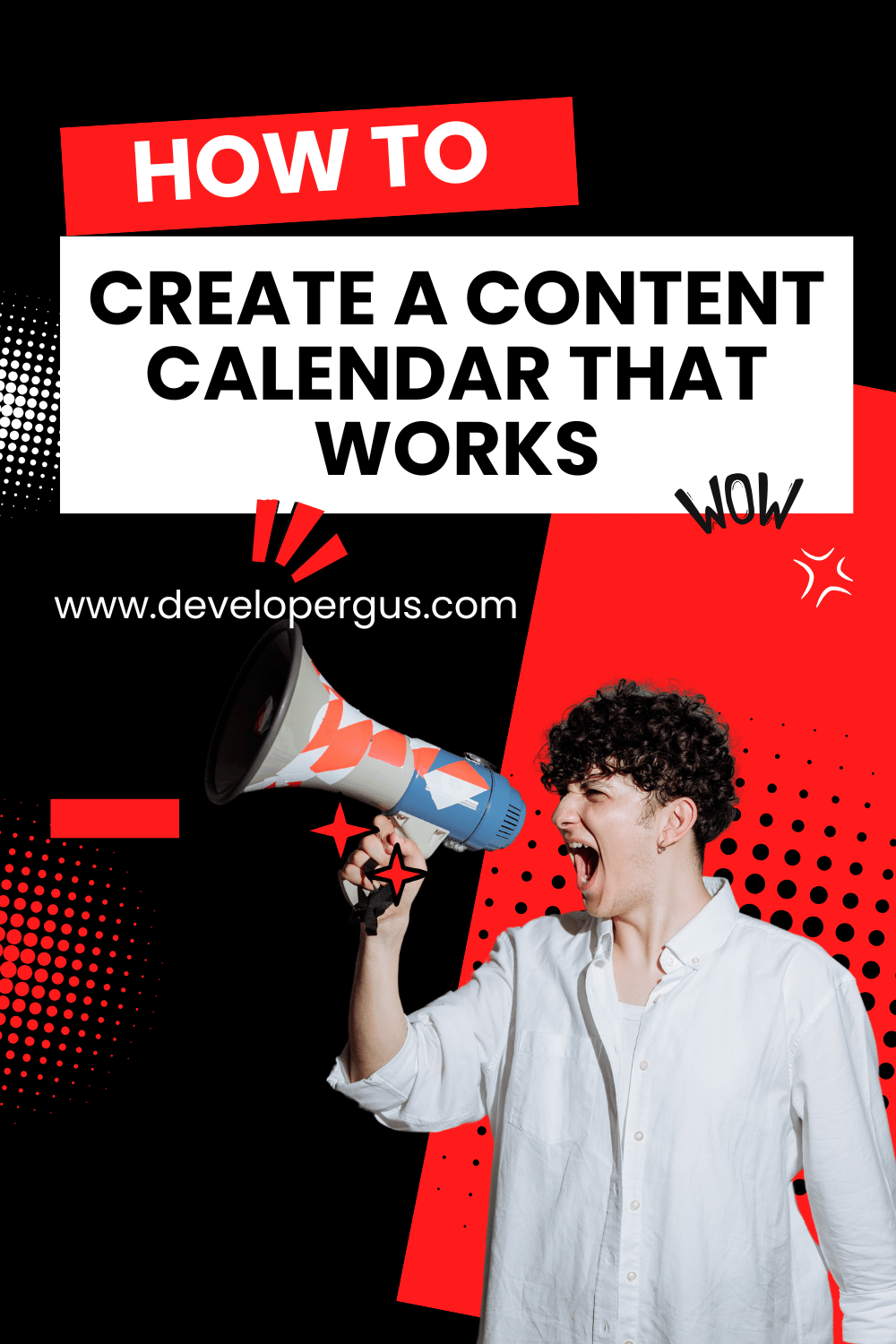Creating an effective content calendar is essential for growing your audience and maintaining a consistent online presence. I’ve found that a well-structured content plan can significantly boost engagement and streamline the content creation process. A content calendar organizes, manages, and schedules content production, giving a top-level overview of everything that will be published over a specific timeframe.

To build a content calendar that truly works, I recommend starting with a reliable calendar tool. Google Calendar is a popular free option, but any app that allows for recurring events can be effective. The key is to choose a system that fits your workflow and helps you visualize your content strategy.
I’ve learned that the most successful content calendars combine digital tools with creative brainstorming. By planning ahead and categorizing content types, you can ensure a balanced mix of topics that resonates with your audience. This approach not only helps maintain consistency but also allows for flexibility to adapt to trending topics or unexpected opportunities.
Understanding Content Calendars
Content calendars are essential tools for organizing and planning content creation. They help streamline workflows and ensure consistent publishing across various channels.
Definition and Purpose
A content calendar is a strategic planning tool that outlines what content will be published, when, and where. It serves as a roadmap for content creators, marketers, and teams to coordinate their efforts effectively. I use content calendars to plan and schedule content across different platforms, including social media, blogs, and websites.
The primary purpose is to maintain consistency and quality in content production. By having a clear overview of upcoming content, I can align my publishing schedule with marketing goals, events, and campaigns. This helps me avoid last-minute rushes and ensures a steady flow of relevant content.
Benefits of a Content Calendar
Using a content calendar offers numerous advantages for content creators and marketing teams. It improves organization and efficiency in content production processes.
Key benefits include:
- Better time management
- Consistent publishing schedule
- Improved content quality
- Enhanced team collaboration
- Alignment with marketing objectives
I find that content calendars help me maintain a bird’s-eye view of my content strategy. This allows me to identify gaps, balance content types, and ensure variety in topics. By planning ahead, I can also allocate resources more effectively and reduce stress associated with content creation deadlines.
Key Components of an Effective Content Calendar
A well-structured content calendar includes essential elements, an appropriate format, and seamless integration with your marketing strategy. These components work together to streamline content creation and distribution.
Essential Elements
An effective content calendar should include publication dates, content types, and target platforms. I recommend including brief descriptions of each piece of content, along with assigned team members and deadlines. Keywords and target audiences are crucial for optimizing your content strategy.
To track progress, I use status indicators like “drafted,” “edited,” or “published.” Including content categories helps maintain a balanced mix of topics.
Visuals play a key role, so I always note any required images, videos, or graphics. Lastly, I incorporate performance metrics to measure each piece’s success.
Choosing the Right Format
The format of your content calendar can significantly impact its usability. I prefer digital tools for their flexibility and collaboration features. Spreadsheets work well for smaller teams, while dedicated content management platforms offer more robust features for larger organizations.
Key factors to consider when selecting a format:
- Team size and collaboration needs
- Budget constraints
- Integration capabilities with existing tools
- Customization options
- Mobile accessibility
I find that visual calendars help me quickly identify gaps or overlaps in the content schedule. Whatever format you choose, ensure it’s user-friendly and adaptable to your team’s workflow.
Integration With Marketing Strategy
Your content calendar should align closely with your overall marketing goals. I start by identifying key marketing campaigns, product launches, and industry events. Then, I plan content that supports these initiatives.
I incorporate buyer personas and customer journey stages into the calendar. This ensures content addresses various audience needs at different points in their decision-making process.
SEO considerations are crucial. I include target keywords and link-building opportunities in the calendar. Seasonal trends and timely topics also find their place in my planning.
To maintain consistency, I schedule regular content audits and updates. This keeps the calendar dynamic and responsive to changing marketing priorities and audience preferences.
Setting Up Your Content Calendar
Creating an effective content calendar involves careful planning, strategic mapping, and choosing the right tools. I’ll guide you through the essential steps to set up a content calendar that drives results.
Initial Planning
To begin, I recommend defining clear goals for your content strategy. What do I want to achieve? Increased website traffic, more social media engagement, or higher conversion rates? These objectives will shape my content planning.
Next, I identify my target audience and their preferences. What topics interest them? Which content formats do they engage with most? This information helps me tailor my content to their needs.
I also consider my content creation capacity. How many pieces can I realistically produce each week or month? This helps me set a sustainable publishing schedule.
Content Mapping and Scheduling
With my goals and audience in mind, I start brainstorming content ideas. I use keyword research and competitor analysis to generate topics that align with my strategy.
I then map out these ideas on my calendar. I consider important dates, product launches, or industry events that might influence my content. I aim for a balanced mix of content types and topics to keep my audience engaged.
When scheduling, I factor in the time needed for each stage of content creation. This includes research, writing, editing, and design. I allocate time for each step to ensure smooth workflow and timely publication.
Tools and Software Options
Choosing the right tool is crucial for managing my content calendar effectively. I explore various options based on my needs and team size.
For small teams or individual creators, I might use simple tools like Google Sheets or Trello. These offer basic scheduling and collaboration features.
For larger teams or more complex content strategies, I consider specialized content calendar software. Tools like CoSchedule or Asana provide advanced features like workflow management and content analytics.
Some platforms offer built-in content idea generation and SEO optimization tools, which can streamline my planning process.
I ensure the chosen tool integrates well with my existing workflow and other software I use. This helps maintain efficiency and consistency across my content creation process.
Content Strategy Development
Creating an effective content strategy is crucial for a successful content calendar. It involves understanding your audience, planning themes, and managing resources efficiently. Let’s explore these key components.
Audience Identification
I start by defining my target audience. I create detailed buyer personas, including demographics, interests, and pain points. This helps me tailor content to their specific needs and preferences.
I analyze social media engagement and website analytics to gain insights into audience behavior. This data reveals which topics resonate most with my readers.
I conduct surveys and interviews to gather direct feedback from my audience. This approach uncovers valuable information about their content preferences and consumption habits.
Content Themes and Topics
I develop a list of core themes aligned with my brand and audience interests. These themes serve as pillars for my content strategy.
I use keyword research tools to identify trending topics within my niche. This ensures my content remains relevant and timely.
I create a content mix that includes educational, entertaining, and promotional material. This balanced approach keeps my audience engaged and supports various marketing objectives.
I plan seasonal and evergreen content to maintain a steady flow of relevant material throughout the year.
Resource Planning and Management
I assess my available resources, including team members, skills, and budget. This helps me determine what content I can realistically produce.
I create a content production workflow that outlines each step from ideation to publication. This streamlines the process and ensures consistency.
I use project management tools to assign tasks, set deadlines, and track progress. This keeps my team organized and accountable.
I allocate resources based on content priority and complexity. I ensure high-value pieces receive adequate attention and support.
I regularly review and adjust my resource allocation based on performance metrics and changing priorities. This flexibility allows me to optimize my content strategy over time.
Maintaining and Updating Your Calendar
Creating a content calendar is just the first step. To maximize its effectiveness, I’ll show you how to keep it current and measure its impact on your goals.
Regular Review and Adjustments
I recommend setting aside time each week to review my content calendar. During this review, I check for any necessary updates or changes based on current events, audience feedback, or shifts in my marketing strategy.
I also use this time to brainstorm new content ideas and fill in any gaps I notice. It’s important to remain flexible – if a piece of content isn’t performing well, I’m not afraid to adjust or replace it.
I make sure to update my calendar regularly to reflect these changes. This keeps my content strategy dynamic and responsive to my audience’s needs.
Measuring Success and ROI
To determine if my content calendar is effective, I track key performance indicators (KPIs) for each piece of content. These might include:
- Engagement rates
- Conversion rates
- Website traffic
- Social media follower growth
I use analytics tools to gather this data and compare it against my goals. By analyzing these metrics, I can identify which types of content resonate most with my audience.
Based on these insights, I optimize my content calendar for better results. This might mean adjusting posting frequencies, focusing on high-performing content types, or experimenting with new formats.








Comments (3007)